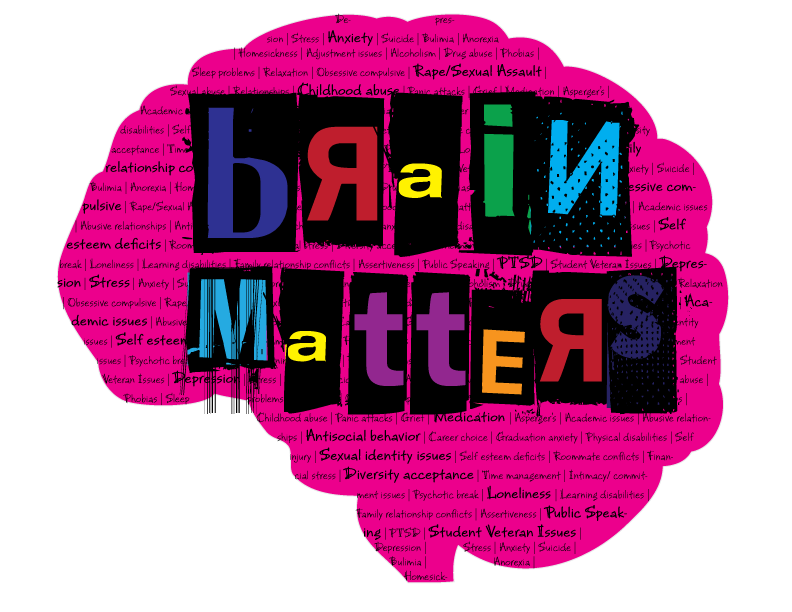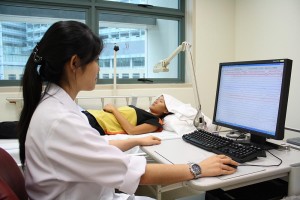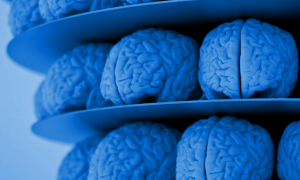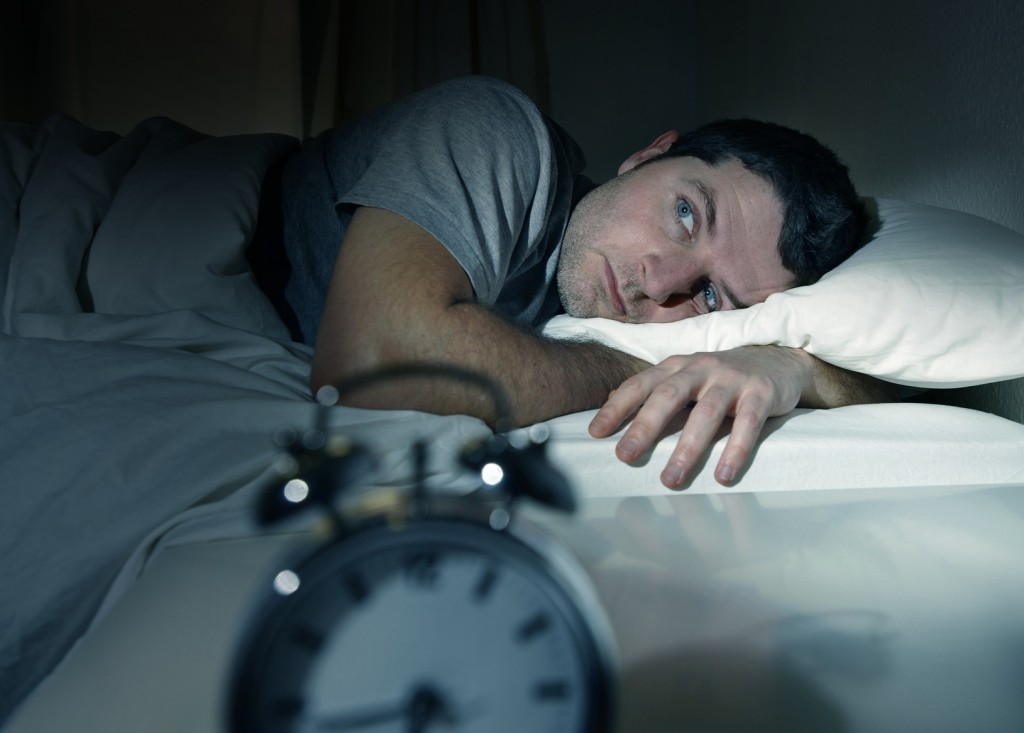Recent studies suggest a role for sleep and sleep problems in the etiology of attention deficit hyperactivity disorder (ADHD) and a recent model about the working mechanism of sensori-motor rhythm (SMR) neurofeedback, proposed that this intervention normalizes sleep and thus improves ADHD symptoms such as inattention and hyperactivity/impulsivity.
 Brian Milstead
Brian Milstead
Linda Walker discusses Neurofeedback on WVUA’s “Brain Matters” radio show
Dr. BJ Guenther interviews 2 experts in the field of neurofeedback. Discussion includes definition and uses of neurofeedback for mental health issues such as depression, anxiety, ADHD, etc. Listen here.
Sleep maintenance, spindling excessive beta and impulse control: an RDoC arousal and regulatory systems approach?
View the PDF
“In this study we aimed to investigate the relation between arousal systems (EEG-beta phenotypes also referred to as spindling excessive beta (SEB), beta spindles or sub-vigil beta) and the behavioral dimensions: insomnia, impulsivity/hyperactivity and attention. This analysis is conducted within a large and heterogeneous outpatient psychiatric population, in order to verify if EEG-beta phenotypes are an objective neurophysiological marker for psychopathological properties shared across psychiatric disorders.”
EEG – Lessons From A Half-Million Brains
Listen to the full podcast here Jay Gunkelman Podcast
This week we’re joined by QEEG Diplomate (yes, that’s a term!) and founder of Brain Science International Jay Gunkelman, to talk Electroencephalography. After analyzing over a half-million EEG scans, Jay has a pretty robust set of human brain data at his disposal… And he uses that body of knowledge to guide the work of psychiatric and other health professionals who make proscriptive recommendations about patients’ brains.
Differential effects of theta/beta and SMR neurofeedback in ADHD on sleep onset latency
Electroencephalography (EEG) Underused Investigative Tool in Hospitals, Study Finds

A retrospective study of patients who had in-hospital electroencephalography (EEG) has established that EEG is a valuable tool that could be deployed more widely to identify treatable causes of impaired consciousness in the hospital setting.
The study is published in the April issue of the Mayo Clinic Proceedings.
Altered mental status (AMS) and paroxysmal spells of uncertain origin are common among hospitalized patients. Impaired consciousness can sometimes be linked to metabolic or cardiac causes, but some of these spells may represent seizures or non-convulsive epilepsy, which can be detected only by electroencephalography (EEG). Although EEG is the key test in making these diagnoses, it is relatively underused in the inpatient setting owing to lack of availability and neurologic consultation at many hospitals in the United States.
Association between ADHD and intensity of sunlight: Can ADHD be prevented?
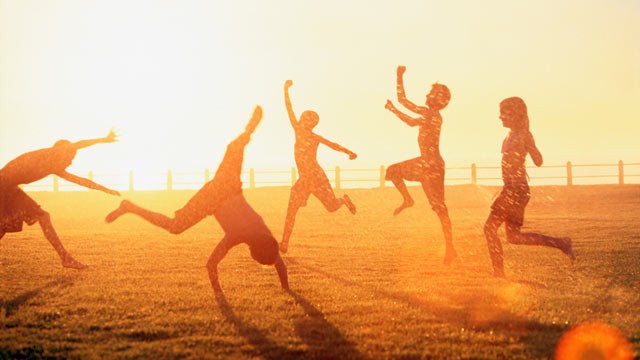
Nijmegen, March 26th, 2013 – A study published today in Biological Psychiatry sheds new light on the increasing rates (prevalence) of attention-deficit/hyperactivity disorder, known as ADHD. Children with ADHD have problems with inattention, distractibility, disorganization, impulsiveness, and overactivity. This study found that “sunny” regions with high solar intensity, such as the US states of California, Arizona, and Colorado, and countries like Spain and Mexico have lower prevalence of ADHD. An apparent protective effect of sunlight accounted for 34-57% of the variance in ADHD prevalence. The authors speculate that this may be related to sunlight’s effects on preventing circadian rhythm (“biological clock”) disturbances. These results suggest ways to prevent or treat ADHD for a substantial sub-group of patients…
Read the full PDF paper “Geographic Variation in the Prevalence of Attention-Deficit/Hyperactivity Disorder: The Sunny Perspective” by Martijn Arns, Kristiaan B. van der Heijden, L. Eugene Arnold, and J. Leon Kenemans.
EEG Complexity as a Biomarker for Autism Spectrum Disorder Risk
William Bosl1,2*, Adrienne Tierney3,4, Helen Tager-Flusberg5, Charles Nelson1,4
Abstract
Background: Complex neurodevelopmental disorders may be characterized by subtle brain function signatures early in life before behavioral symptoms are apparent. Such endophenotypes may be measurable biomarkers for later cognitive impairments. The nonlinear complexity of electroencephalography (EEG) signals is believed to contain information about the architecture of the neural networks in the brain on many scales. Early detection of abnormalities in EEG signals may be an early biomarker for developmental cognitive disorders. The goal of this paper is to demonstrate that the modified multiscale entropy (mMSE) computed on the basis of resting state EEG data can be used as a biomarker of normal brain development and distinguish typically developing children from a group of infants at high risk for autism spectrum disorder (ASD), defined on the basis of an older sibling with ASD.
Methods: Using mMSE as a feature vector, a multiclass support vector machine algorithm was used to classify typically developing and high-risk groups. Classification was computed separately within each age group from 6 to 24 months.
House Again Passes Thompson’s Bipartisan Amendment to Improve TBI, PTSD Treatment For Troops & Veterans

Washington, DC, Jul 18 – Congressman Mike Thompson (CA-1), co-chair of the bipartisan Military Veterans Caucus, today again secured the passage of his bipartisan amendment with Congressman Pete Sessions (TX-32) to expedite new and innovative treatments to our nations’ veterans and active duty soldiers suffering from Traumatic Brain Injuries (TBI) and Post-Traumatic Stress Disorder (PTSD). This is the second time the House has passed the amendment. In May, the TBI treatment expansion initiative was adopted as a House amendment to the National Defense Authorization Act (NDAA) for Fiscal Year 2013 (H.R. 4310), however the Senate has yet to take up this bill. Today it was passed as an amendment to H.R. 5856, the Department of Defense (DOD) Appropriations Act for Fiscal Year 2013. The amendment passed by voice vote. The House will vote on H.R. 5856 later this week.
“Our troops and veterans have earned the very best treatment and care that we can provide,” said Thompson. “But sometimes the best treatments aren’t available at military and veteran medical facilities. My amendment will make sure that our heroes who return from combat with TBI or PTSD have access to the highest quality care our nation has to offer. I will keep introducing this legislation until it is law. It’s what our heroes have earned.”
“I am pleased that our colleagues have joined us in recognizing the importance of providing treatment options not currently available within military and veteran medical facilities to those who return from combat with TBI or PTSD,” said Sessions. “As we approach the Memorial Day holiday, I believe we can best honor our nation’s active duty soldiers and veterans by ensuring that their health is a top priority and that they have access to the most effective treatments available.”
Head Impact Exposure in Youth Football

Ray W. Daniel1, Steven Rowson1 and Stefan M. Duma1
| (1) | Center for Injury Biomechanics, Virginia Tech-Wake Forest University, 440 ICTAS Building, Stanger St., Blacksburg, VA, 24061, USA |
| Steven Rowson Email: srowson@vt.edu |
Received: 1 February 2012 Accepted: 3 February 2012 Published online: 15 February 2012
Abstract
The head impact exposure for athletes involved in football at the college and high school levels has been well documented; however, the head impact exposure of the youth population involved with football has yet to be investigated, despite its dramatically larger population. The objective of this study was to investigate the head impact exposure in youth football. Impacts were monitored using a custom 12 accelerometer array equipped inside the helmets of seven players aged 7–8 years old during each game and practice for an entire season. A total of 748 impacts were collected from the 7 participating players during the season, with an average of 107 impacts per player. Linear accelerations ranged from 10 to 100 g, and the rotational accelerations ranged from 52 to 7694 rad/s2. The majority of the high level impacts occurred during practices, with 29 of the 38 impacts above 40 g occurring in practices. Although less frequent, youth football can produce high head accelerations in the range of concussion causing impacts measured in adults. In order to minimize these most severe head impacts, youth football practices should be modified to eliminate high impact drills that do not replicate the game situations.
Sports related concussions have received increased public awareness, with many states considering or implementing laws directing the response to suspected brain injury. This is a result new research suggesting possible links to long-term consequences from repetitive concussions.13,21,22 Emergency department visits for concussions increased 62% between 2001 and 2009, and researchers estimate that between 1.6 and 3.8 million sports related concussion occur each year in the United States.5,19 Of all sports, football accounts for the highest incidence of concussion, and therefore receives the most attention.34 One of the leading thoughts to minimize the incidence of concussion in football is to limit players’ exposure to head impacts.9 Strategies to reduce a player’s exposure to head impact include teaching proper tackling techniques and modifying the rules of the game.

